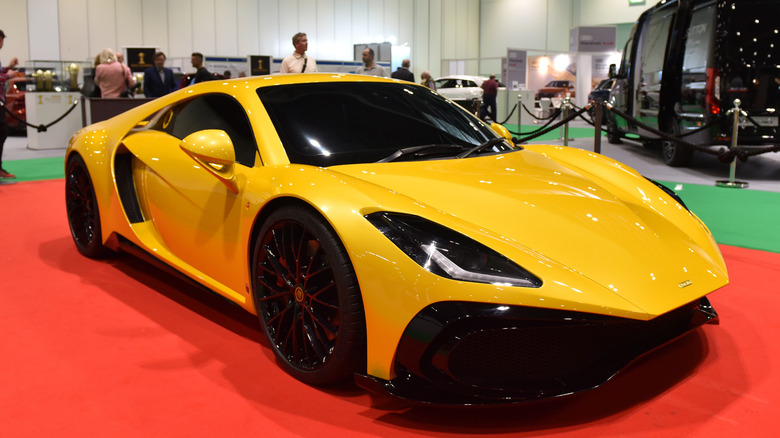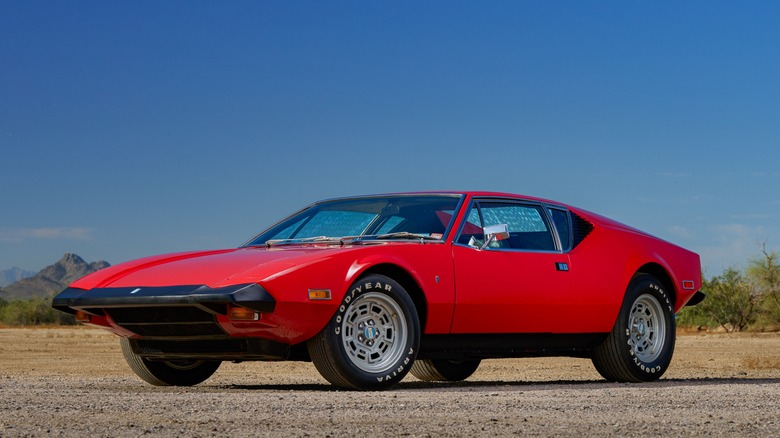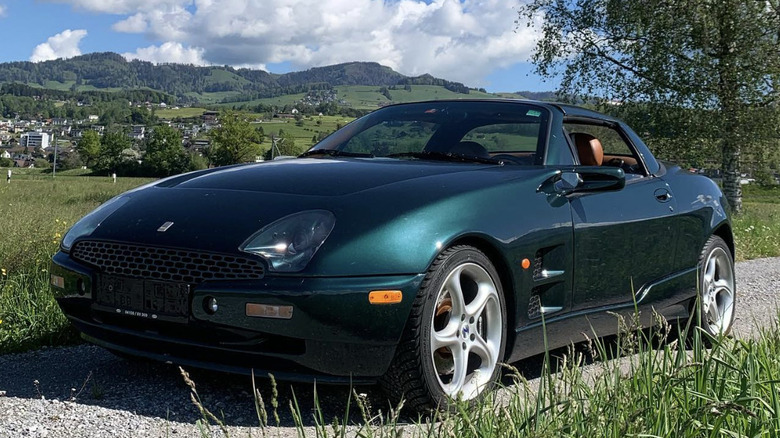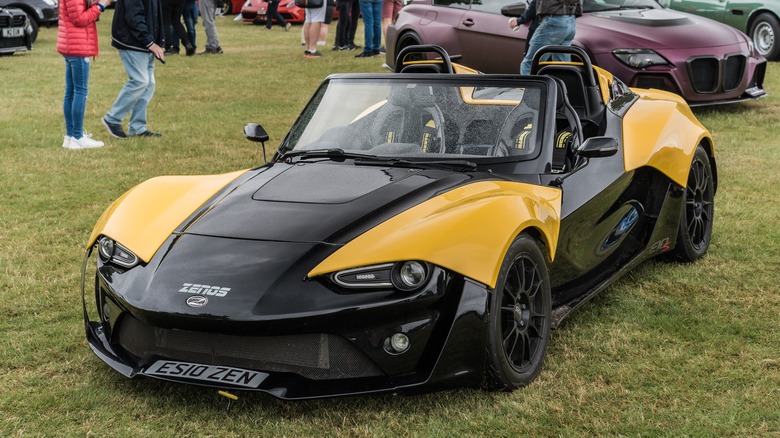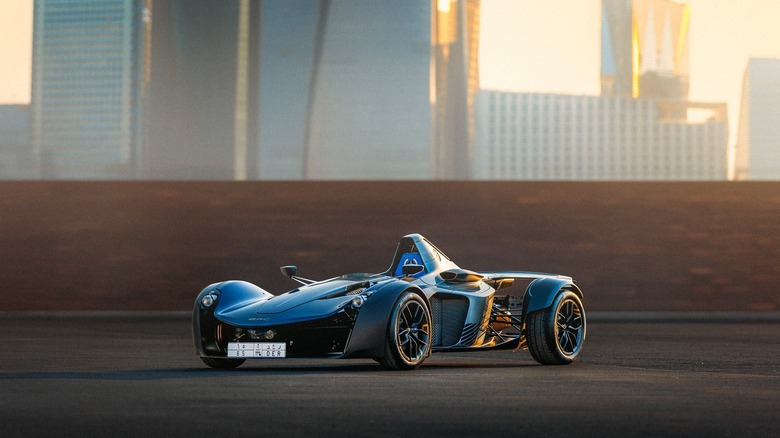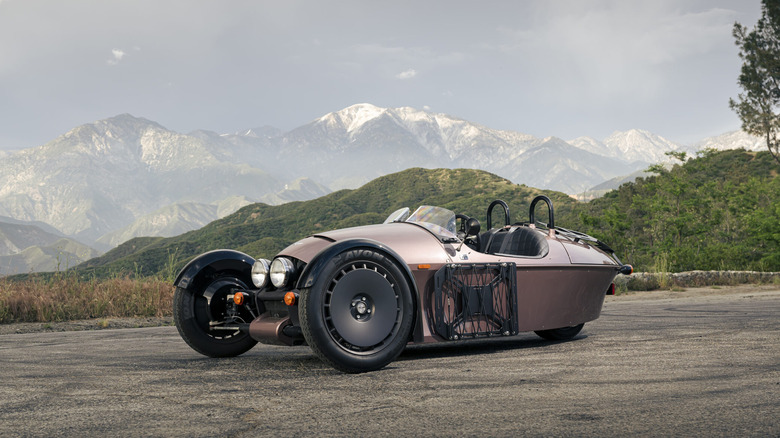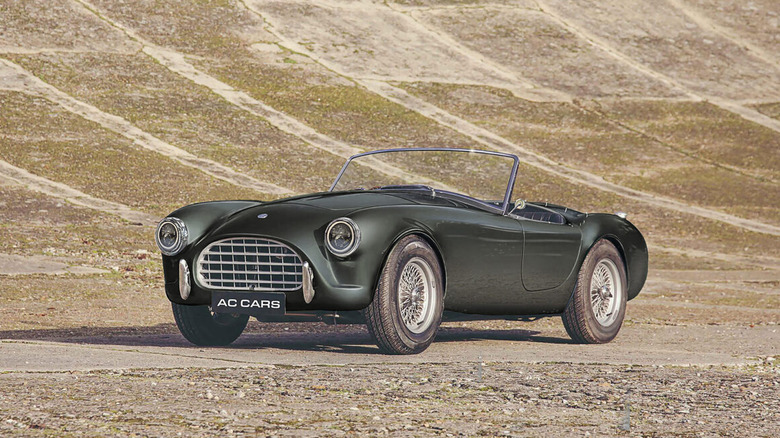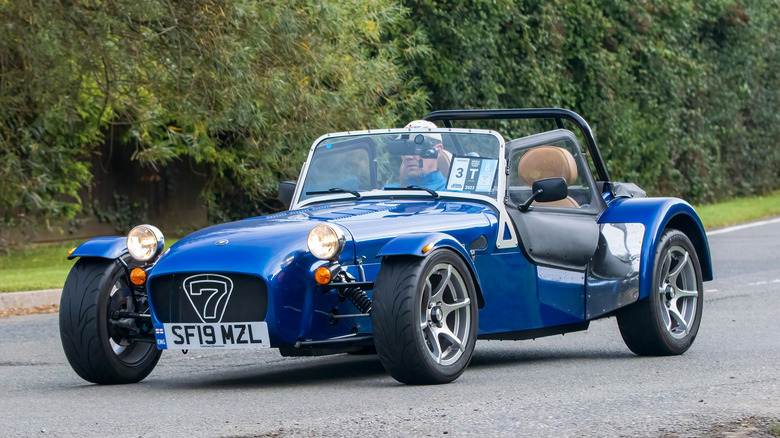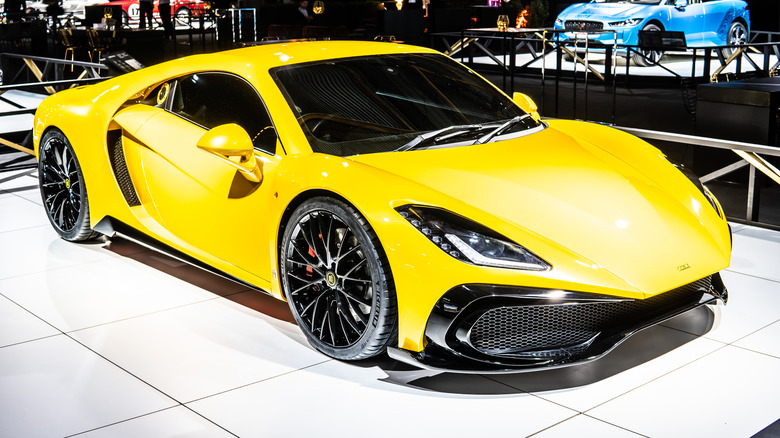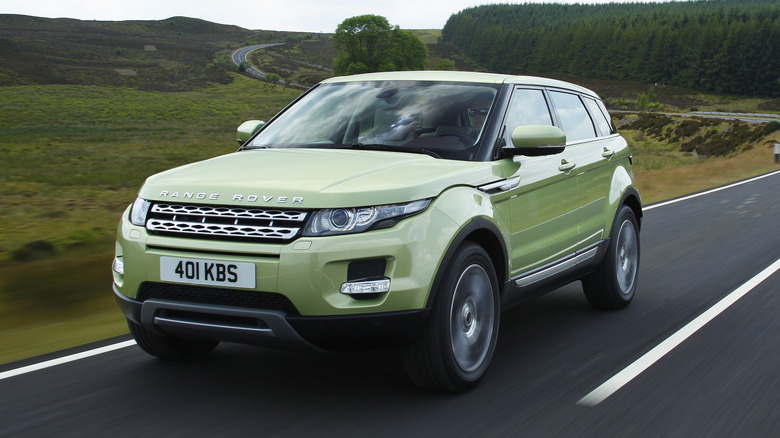9 Non-Ford Cars Powered By Ford Engines
Generally speaking, automakers engineer powertrains in-house. When the R&D budget allows it, a group of engineers gets together and make the automaker's engine vision a reality. This has been the practice for over a century, and it's something we're all used to. However, things don't always go like this.
Sometimes, the automaker is way smaller, and thus doesn't have the budget to engineer a powertrain in-house at all. The most popular remedy for this monkey wrench is going to another automaker and asking to use one of its powertrains. You're certainly aware of what makes General Motors' LS engines so special, given their appearance in so many different low-volume cars. In this space, one of the most generous automakers is definitely Ford.
The Blue Oval has been making engines for over 100 years, some great ones and some terrible ones. Among them, Ford has produced some of the most impressive engines, and they've found homes in performance cars all over, with barely a hint of a Blue Oval badge in sight. Ford's powertrains have proven themselves time and again, making them a go-to choice for smaller manufacturers.
DeTomaso Pantera
Famously owned by Elvis Presley, the DeTomaso Pantera was the successor to the Mangusta and the brainchild of Argentinian-Italian businessman and car enthusiast Alejandro DeTomaso. Although DeTomaso has been revived and is now making a lovely supercar, the Pantera is easily the most recognizable out of the company's back catalog.
The story of the Pantera is fascinating. It was actually a collaboration between DeTomaso and FoMoCo to distribute a supercar through Ford's expansive dealership network that also included Mercury and Lincoln. It was engineered by a former Lambo engineer, while the design was penned by Tom Tjaarda, the same mastermind that brought us the Saab 900 and Ford's own ill-fated Mustang II.
As you'd imagine, being a partnership with Ford, the Pantera uses Ford power. It became one of the coolest cars equipped with Ford's 351 V8 engine, specifically the 351 ci Cleveland, which gave it the performance to match its striking looks. Surprisingly, the Pantera was actually in production until the early '90s.
Qvale Mangusta
What is this curiosity? Believe it or not, despite being called a Qvale (cuh-val-e), this was a DeTomaso vehicle at one point as well. The super enigmatic Qvale Mangusta was originally a DeTomaso vehicle conceived by the founder and Giordano Casarini, technical director at Maserati at the time.
Originally called the DeTomaso Biguà, the project required extra funding, which would be procured by Kjell Qvale, a businessman responsible for importing Jaguars to North America and importing the original DeTomaso Mangusta back in the '70s.
Due to some internal conflicts, Qvale separated from DeTomaso and Casarini and went on to market the car as the Qvale Mangusta. The bizarro styling was done by the great Marcello Gandini, while the powertrain was Ford's 4.6-liter Modular V8 that powered the SN-97 Mustang. Actually, the Mustang also donated most of its interior wholesale, to which then Qvale affixed a little more leather and a button to open the hardtop.
Only 284 were produced, but we don't know how many still exist. To make things even stranger, this is the car that would eventually spawn the MG XPower SV, a two-door RWD sports car with Fiat Punto headlights.
Zenos E10
Perhaps best known for its 15 minutes of TV fame as Captain Slow's wheels of choice during the trio's trip to Morocco, the Zenos E10 comes from serious talent. The founders of Zenos' CVs include Lotus and Caterham, so they definitely knew a thing or two about making a lightweight, track-focused sports car.
It's almost a textbook formula at this point, at least by British track rocket standards. The E10 is an attractive open-top two-seater with basically no creature comforts, and under the hood is either Ford's 2.0-liter EcoBoost turbo four-banger from the Focus ST, or the 2.3-liter turbo EcoBoost from the Focus RS and the Mustang — every Ford model powered by the 2.3L EcoBoost engine benefits from its punchy performance.
The maximum power output was 350 hp, which is crazy for a car this small and this light. Obviously, that all went to the rear wheels through a six-speed manual transmission. There's only one place you'd willingly want to drive a Zenos E10, and that would be the race track. Vehicles like this don't really like it when you drive them at low speeds on public roads.
BAC Mono
One of a few cars that Clarkson truly fell in love with. The BAC Mono is yet another car from the British school of lightweight street-legal track cars, except the Mono was a completely different animal. For one thing, it has a single seat, whereas most of the others have two seats.
The dramatic styling obviously takes inspiration from open-wheel race cars. Lying over the rear axle is a slightly older 2.3-liter Duratec four-cylinder from Ford, with absolutely no forced induction in sight. Despite that, BAC managed to extract around 280 hp from it, which in the Mono meant a 0-60 time of less than three seconds.
Power went to the rear wheels through a six-speed sequential manual transmission that, despite being controlled through paddle shifters, still had a clutch pedal that slowly became redundant the faster you went. The interior, and I use that term loosely, was also famously upholstered in hydrophobic material. The Mono is still in production to this day, and it's one of the most amazing examples of a boutique track car, and proof that good old engineering simply cannot be beat.
Morgan Super 3
The Morgan 3 Wheeler is one of the most fascinating performance cars of the past couple of decades. An unapologetic tribute to Morgan's own F-Series of cars from the '30s, '40s, and '50s, the 3 Wheeler was definitely an acquired taste. Three wheels and an S&S V-twin engine paired up to a Mazda-sourced manual transmission.
Despite it being a silly concept, it totally worked, and it just received a new and improved successor. The Morgan Super 3 looks basically the same, aside from those tasty monoblock wheels and various minor updates here and there. The most notable upgrade is under the hood, as the S&S Cycle V-twin has been replaced.
In its place comes a 1.5-liter EcoBoost three pot from Ford, putting out a tiny 118 hp. That should still be plenty enough in the 1,400 lb Super 3. That's all wrapped up in a new aluminum chassis, and power gets to the wheels through, once again, a Mazda manual transmission. This is quite a different approach to the lightweight sports car, and quite a compromised one, despite being a total blast.
AC Ace Continuation
This is the most recent one, and it's looking fantastic on paper. Some people might have forgotten, but what most of us know as the Shelby Cobra actually began life as the AC Ace, a British roadster with a much more grounded six-cylinder engine. Well, AC Cars is now back, and as well as offering a Coyote-powered Cobra, the Ace is now also back.
Like the original, the new Ace is built on a tubular spaceframe chassis, but it now gets mostly carbon fiber bodywork. No six-cylinder power under the hood, sadly, but in place of that there's Ford's 2.3-liter EcoBoost engine from the Focus ST, tuned in this application to over 300 hp. Power arrives to the rear wheels through a mandatory six-speed manual transmission.
While it is heavier than the original Ace, and by itself, it's not the lightest automobile of this type, it still weighs a respectable 2,425 pounds. AC estimates that it should go from 0 to 60 mph in the mid-four-second range, which is fantastic. On the outside, the styling is largely unchanged, wire wheels included. There are some subtle changes like the new LED headlights and new grille. Considering how many Shelby Cobras were made and that one is worth around $213,000 today, it's no surprise that a vehicle like this won't come cheap.
Caterham Seven
The Caterham Seven has become such a household name in the world of track-focused sports cars, it's easy to forget that it was a Lotus vehicle at one point. Once Colin Chapman decided to tackle other types of sports cars, he sold the rights to build the Seven to Caterham, and Caterham has carried the Seven torch ever since then.
The two cheapest versions of the Seven use Suzuki powertrains, but the rest of the lineup all use the exact same engine: a 2.0-liter Ford Duratec unit that, in most of them, is naturally aspirated and tuned to rev really high. It distributes power to the rear wheels and is hooked up to a six-speed sequential transmission in most versions. In the terrifying Seven 620R, the engine dispatches 310 hp thanks to the addition of a supercharger.
The Seven doesn't really have a whole lot else, and most of them don't even include a roof or a windshield, for that matter. That's all optional. No surprise there, as despite being street legal, the Seven is one of the most focused and dedicated track day cars out there.
Noble M500
Noble Automotive has quite the close relationship with Ford. Ever since the original models from 25 years ago, some type of Ford powertrain has found its way into Noble's cars. The M600 broke the mold by using the Yamaha-engineered B8444S V8 that also powered the Volvo XC90, but for its latest model, Noble is returning to its roots.
The new M500 is gunning for the Porsche 911, and like most of its ancestors, power comes from a Ford engine. This time, it's the 3.5-liter twin-turbo EcoBoost unit that you'd find in stuff like the F-150 Raptor. Total output is 500 hp and 550 lb-ft of torque, which goes to the rear wheels through, drumroll please... a true six-speed manual transmission with three pedals.
All of that is wrapped up in a modernized, surprisingly attractive body that will be made of fiberglass in the production model, while the same steel spaceframe chassis from the M600 underpins it. Production will likely be very limited, but Noble certainly knows a thing or two about how to set up a great handling sports car, so the M500 is looking great on paper based on the previous track record. Also, like a true Noble, it doesn't come with anti-lock brakes.
Range Rover Evoque
Launched back in 2010, the Range Rover Evoque ended up being one of Land Rover's most important models. Arriving right at the beginning of the SUV revolution, the Evoque brought the troubled brand something it desperately needed: A small, entry-level model that has the brand cachet, but is also smaller and designed to appeal to a larger audience.
The Evoque is still very much around today, though it no longer offers Ford power. Yes, really, the original Evoque was available with powertrains from the Blue Oval initially. Evthe original Evoque was available with powertrains from the Blue Oval initially. Even though the Indianen though the Indian Tata had already taken over JLR by the time the Evoque was out, it was developed during the Premier Automotive Group era.
As a result, and to save money on developing a brand new four-cylinder engine shortly after Tata finalized the acquisition, a 2.0-liter Duratec four-cylinder was offered on the initial run of Evoques, and in foreign markets, you could have a 2.0-liter Duratorq turbo diesel as well. As the Evoque evolved, these engines would be replaced by the Ingenium family. There for a while, however, your Range Rover Evoque was powered by an engine you might have found in a Ford Fusion or Mondeo.
